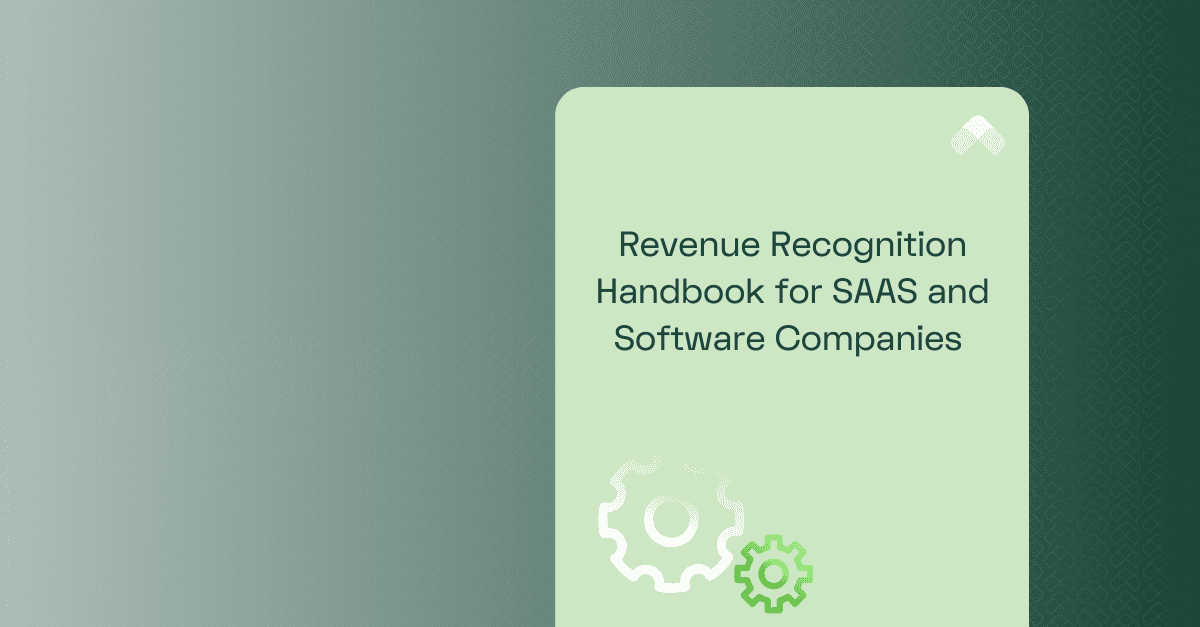Software as a service (SaaS) companies face mounting challenges when it comes to accounting. Between GAAP reporting, closing the books, chasing invoices, and keeping up with the latest accounting standards, it can seem like a constant uphill battle. Additionally, managing revenue recognition is a challenge due to ongoing and constantly changing subscriptions, especially for companies that follow accrual accounting.
Manual tracking of contracts, billing terms, and obligations leads to errors and inefficiencies, while traditional ERPs struggle to meet modern standards. CFOs face lengthy close cycles, inaccurate reports, and increased regulatory scrutiny, which hinder decision-making and growth.
Automation is essential for scaling (and saving the accounting profession!). SaaS accounting software like RightRev automates revenue recognition, providing real-time insights, compliance tracking, and efficient, high-volume processing. This helps CFOs ensure accurate financial reporting and audit readiness while supporting SaaS business growth. It also assists with producing detailed reports such as the cash flow statement, essential for internal and external stakeholders.
Let’s explore the key challenges in revenue recognition and how automation can address them.
The Biggest Challenges CFOs Face in SaaS Accounting
SaaS and subscription contracts are continuous in nature. Customers pay for continuous access to software based on agreed-upon timelines and prices. SaaS companies must track monthly recurring revenue, upgrades, downgrades, and mid-cycle changes while remaining compliant with ASC 606 and IFRS standards.
The continuous nature of SaaS contracts presents four major obstacles for accountants: ensuring compliance, handling contract modifications, managing high transaction volumes, and consolidating fragmented revenue data. Below, we explore these roadblocks in detail.
Managing ASC 606 Compliance for SaaS Revenue Recognition
ASC 606 requires companies to recognize revenue based on performance obligations, not just cash receivables, following accrual accounting principles. This fundamentally shifts how SaaS companies report revenue, emphasizing the need for modern SaaS accounting systems. For SaaS revenue recognition, this means paying close attention to contract details.
Some common pain points include:
- Ramp deals, usage-based pricing, and multi-year contracts: These structures complicate revenue schedules, especially when contract modifications occur.
- Bundled software and hardware products: Revenue must be accurately split between deliverables, especially under Generally Accepted Accounting Principles (GAAP).
- Complex subscription business models: Varying billing cycles, proration rules, and tiered pricing structures require careful tracking to ensure revenue is recognized accurately.
Manual processes make these challenges even more difficult. Many companies still struggle to close their books within one week. In fact, according to a survey by the American Productivity & Quality Center, the average organization takes more than six days to finalize a month’s financials.
RightRev automates compliance with international financial reporting standards and ASC 606 in real-time, ensuring accurate financial reporting, reducing audit risks, and streamlining revenue workflows for SaaS finance teams. These tools are invaluable for maintaining a company’s financial health and ensuring clear communication with stakeholders through accurate financial statements.
Handling Contract Modifications
SaaS companies constantly deal with customer contracts that evolve over time. Renewals, downgrades, plan upgrades, and cancellations impact deferred revenue calculations, creating ongoing challenges for revenue recognition.
When contracts change, accounting teams must adjust revenue, including deferred revenue from prepayments. Manually tracking these shifts can prove overwhelming. Even small transaction price adjustments require recalculations; errors can lead to costly penalties.
Key challenges include:
- Frequent contract changes require constant revenue adjustments.
- Deferred revenue complexities that impact reporting and financial statements.
- Transaction price modifications that affect compliance and recognition accuracy.
For example, if a customer switches from basic to premium mid-cycle, the new amount must be reflected in the income statement while ensuring previously billed amounts are correctly handled as deferred revenue.
If an enterprise customer moves from a lower-tier subscription to a premium one, the company must ensure that the balance sheet and income statements reflect accurate revenue adjustments while appropriately recognizing new revenue streams. They must also comply with all regulations outlined by the International Accounting Standards Board.
RightRev automates revenue recognition, dynamically updating schedules to ensure accuracy, ASC 606 compliance, and a clear financial position. This automation lets finance teams focus on strategy instead of tracking contract changes manually.
Scaling High-Volume Transactions Without Errors
SaaS companies handle an immense volume of monthly transactions, fueled by monthly recurring revenue from subscription renewals and annual recurring revenue from long-term contracts. Every billing cycle adds layers of complexity, making accuracy and efficiency essential for sustainable growth.
Manual revenue recognition in spreadsheets simply can’t cope. Outdated ERP systems lack the efficiency needed to handle high transaction volumes, leading to:
- Revenue discrepancies that create audit risks.
- Slow reconciliation processes, delaying financial reports and strategic decisions.
- Inaccurate financial statements, impacting forecasts and business planning.
Manually tracking these transactions leads to errors, delays, and unnecessary headaches. That’s why finance teams rely on revenue accounting software like RightRev, which is designed to process massive transaction volumes efficiently while ensuring ASC 606 compliance.
RightRev’s scalable automation can efficiently process surging transactions, ensuring real-time revenue tracking. With automated revenue recognition, CFOs can confidently manage deferred revenue, ensure precise financial tracking, and maintain transparency in financial operations.
By automating these processes with SaaS accounting software, companies can efficiently scale without sacrificing accuracy, enabling real-time reporting and secure handling of accrued revenue.
Consolidating Revenue Data Across Multiple Systems
SaaS companies rely on multiple platforms to manage subscriptions, customer accounts, and billing. Without the right accounting software, revenue data is often fragmented across customer relationship management systems (CRMs), subscription management platforms, and enterprise resource planning (ERP) systems, making accurate reporting a major challenge. It’s difficult to track key SaaS KPIs and ensure timely financial outputs like the cash flow statement.
This creates a time-consuming headache for finance teams. They must manually pull revenue data from various platforms, increasing the risk of errors, inconsistencies, and reporting delays.
When revenue information is scattered, it becomes difficult to get a clear picture of the company’s financial health and track essential SaaS metrics like churn, customer acquisition cost, and contract value. This lack of synchronization complicates financial management, making it harder for CFOs to generate real-time reports and make informed business decisions.
RightRev simplifies revenue data consolidation by integrating seamlessly with financial platforms. Instead of manually reconciling data, finance teams can rely on a fully automated system that ensures revenue accuracy, eliminates silos, and provides real-time visibility. With all revenue data in one place, SaaS businesses can confidently manage finances and drive growth.
How Automation Can Solve These Challenges
SaaS finance teams juggle complex contracts, soaring transaction volumes, and scattered revenue data—making revenue recognition a daily challenge. As mentioned, traditional methods just can’t keep up, leading to reporting delays, compliance headaches, and missed insights.
Automation is the key to turning this chaos into clarity.
Let’s take a look at how automating revenue recognition boosts accuracy, unifies financial data, streamlines forecasting, and keeps compliance airtight.
Automating Revenue Recognition for Accuracy and Faster Insights
Manual revenue tracking isn’t just risky—it’s slow. When accountants spend hours adjusting revenue schedules, recalculating deferred revenue, and reconciling mismatched data, they lose valuable time that could be spent on strategic initiatives.
“My team is spending too much time entering basic transaction data. This should be automated so that my team can focus on what we do best: revenue analysis. We need to focus our efforts on the highest-risk areas rather than data entry.”
—Controller, $400M annual revenue public company
RightRev takes the hassle out of revenue recognition. By automating performance obligation tracking and ASC 606 compliance, RightRev ensures revenue is recognized accurately and financial records stay audit-ready.
Take a look:
- Before automation: Accountants spend hours recalculating revenue schedules, manually adjusting deferred revenue, and correcting errors across different platforms.
- After automation: Revenue is tracked in real-time, accurately reflecting financial data across all systems with minimal oversight. All while allowing accounting teams to close the books faster.
Eliminating Data Silos With Seamless Integrations
SaaS CFOs need a complete financial picture to drive business decisions, but fragmented revenue systems make this difficult. Revenue data is often scattered across CRMs, billing platforms, and ERP systems.
Without seamless integration, finance teams struggle to consolidate key revenue reports like:
- Revenue waterfall
- Deferred revenue roll-forward report
- Revenue contracts roll-forward report
- Remaining performance obligations
- Income statements
- Balance sheets
Manually stitching this data together is tedious, inefficient, and full of error opportunities.
RightRev eliminates these bottlenecks with an API-based architecture that connects effortlessly with order management, billing applications, subscription tools, and general ledgers. Instead of having to fiddle with multiple data sources, finance teams get a unified, real-time view of their revenue, making reporting faster and more accurate.
Achieving Real-Time Revenue Forecasting and Insights
SaaS CFOs live and breathe numbers; forecasting is their secret weapon for smart decision-making. Accurate revenue projections keep everything on track, from predicting growth to optimizing budgets.
Relying on spreadsheets is like using an ancient map to navigate today’s roads—it’s outdated and unreliable.
What happens when finance teams manually crunch numbers, pulling from historical data that doesn’t reflect real-time contract changes? Delayed, inaccurate forecasts make financial planning a ceaseless challenge.
RightRev changes the game by automating revenue forecasting. Live contract data feeds directly into projections, ensuring CFOs gain a clearer view of future revenue trends and make informed decisions with confidence. That means no more guesswork—just clear, reliable insights that fuel smarter, faster decisions.
Ensuring Compliance While Scaling Revenue Operations
Growing SaaS companies face increasing compliance challenges. Compliance errors become more costly and difficult to fix as businesses scale, putting financial integrity and audit readiness at risk.
Companies must ensure that every transaction meets regulatory requirements, whether following the FASB’s Generally Accepted Accounting Principles or adhering to IFRS under the IASB.
RightRev keeps revenue compliant with ASC 606 and IFRS 15, cutting audit risks and manual headaches. Automated tracking ensures accurate income statement reporting, predictable budgeting, and financial clarity.
Future-Proof Your SaaS Accounting With RightRev
SaaS CFOs deal with nonstop revenue challenges, including ASC 606 compliance, contract modifications, high transaction volumes, and data scattered across multiple financial systems.
Manually tracking all this? That road leads to errors, delays, and compliance headaches.
Automation is the way forward. Sticking with outdated processes only slows growth and increases risk. A revenue recognition handbook would call out the need for efficiency, accuracy, and streamlined financial workflows in today’s competitive SaaS landscape.
RightRev takes the complexity out of revenue recognition, ensuring every transaction follows SaaS accounting standards, reducing audit risks, and keeping financial data reliable. With automation, CFOs can scale faster, stay compliant, and get real-time financial insights—without burning out on manual work.
Let RightRev do the heavy lifting so your finance teams can focus on strategy instead of spreadsheets. Request a demo today!




